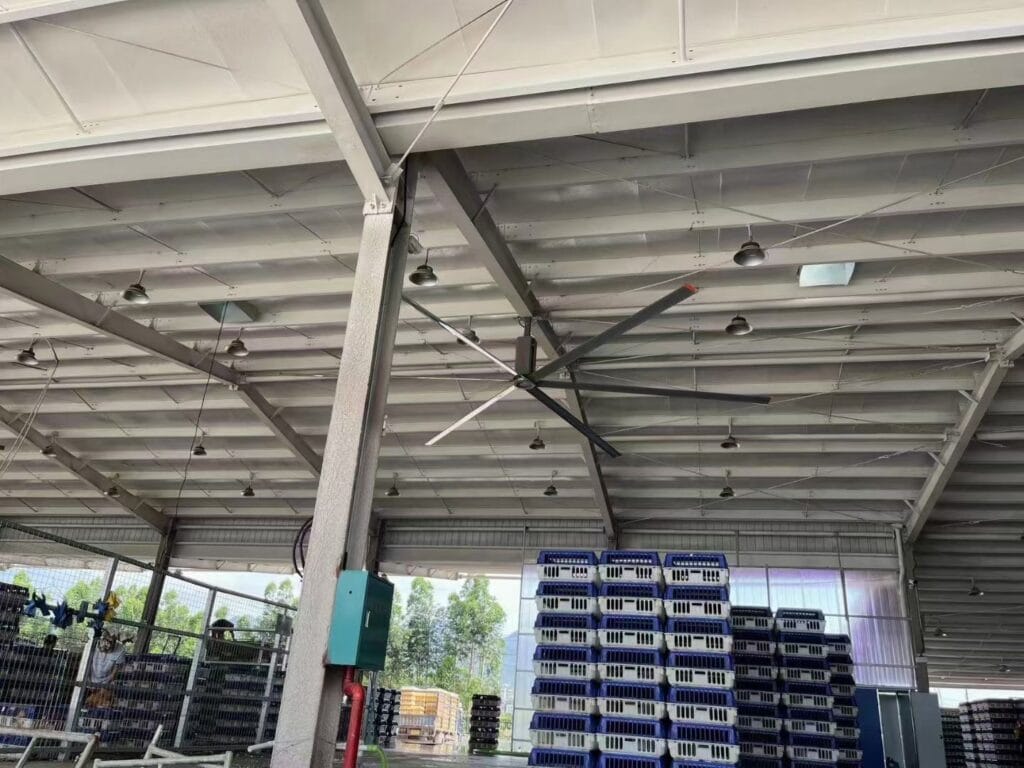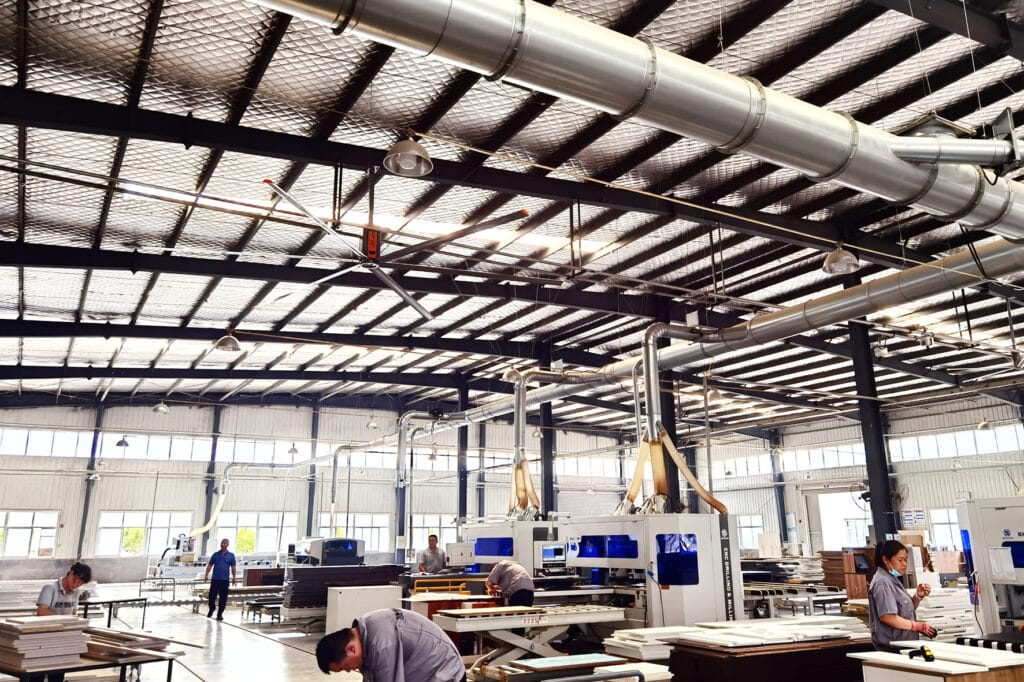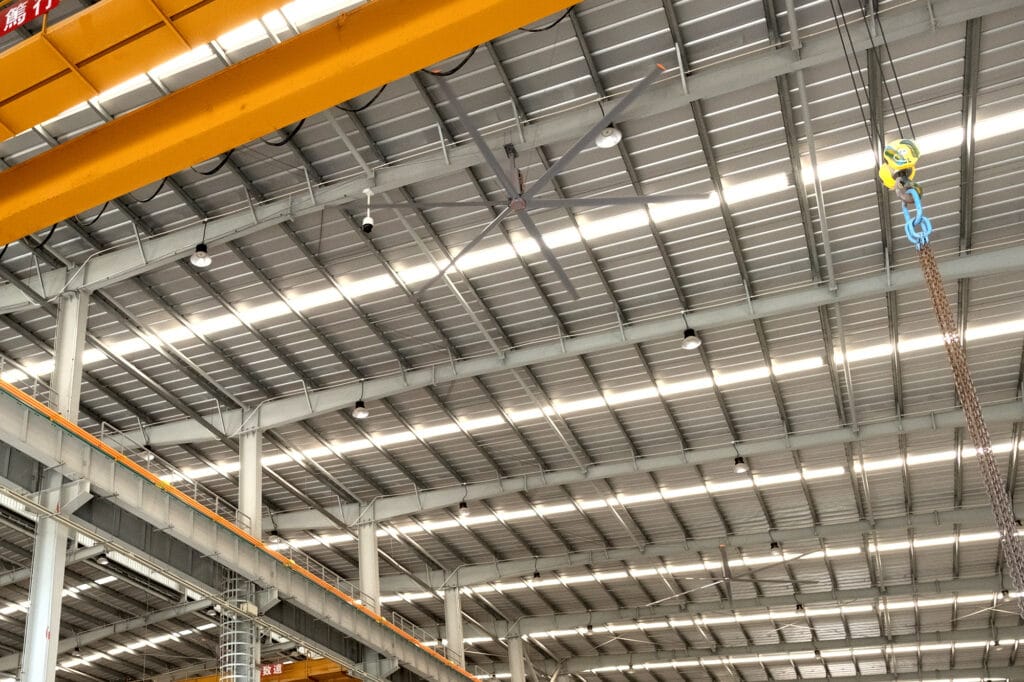Restaurants are not mere consumption centers, but they are a place where ambiance, comfort, and hygiene come together to create memories. Still, it is hard to keep the air in such dense restaurants clean and to maintain the great mood, and the following issues, like lingering odors, excessive humidity, and non-uniform temperatures, are inclined to mar the pleasure.
Ceiling fans, and in particular High-Volume Low-Speed (HVLS) fans, will improve hygiene and comfort at restaurants by improving the quality of air in restaurants through better circulation, removal of odors, and humidification. Restaurant ventilation fans and industrial dining fans make sure that the environment is inviting to customers, which leads to an increase in customer satisfaction, food safety, and repeat business with the restaurant, and balances the airflow the HVAC systems require.
RTFANS is a leader in the ventilation solutions industry, having served for more than 20 years and helped many restaurants to improve the dining experience. We will also analyze the data on such benefits as the relations between ventilation and customer satisfaction, and the impact on reviews and loyalty.
The Direct Impact of Ventilation on Customer Experience
The most prominent feature of the entire experience that helps a restaurant succeed is air quality. The places are stuffy, food-smelling, and uncomfortable due to the lack of ventilation, making the diners feel uncomfortable and end their visit. This can be solved by providing evidence that shows that air circulation can positively influence perceived air quality and the reduction of accumulated exhaled CO2 concentration in occupied buildings, which translates into favorable time at restaurants, longer stays, and greater investment. This would be seen in such an example as the use of fans in open-kitchen designs to prevent the encroachment of cooking aromas into the dining areas, and integrating the senses to a more balanced point. This kind of ventilation/customer satisfaction correlation is visible in the practice of the industry: a well-ventilated area is not merely inviting and friendly but also suggests a demonstration of a sense of hygiene, which has an impact on the impressions of the diners and further visits there.

Key Benefits: Odor Reduction, Fresh Airflow, and Humidity Control
Ceiling fans are excellent for providing specific advantages to improve the air quality in restaurants. The HVLS models have a blade diameter of 8-24 feet and can travel at speeds as low as 400,000 cubic feet per minute (cubic feet/minute) without drafts, providing extensive circulation at a low speed.
Odor Reduction for a Pleasant Ambiance
Frying or grilling, or spices lingering aroma can ruin the eating experience. HVLS fans suppress these odors by ensuring that the air circulates, and these smells do not accumulate in the eating areas. Restaurant ventilation fans installed in a busy bistro caused odor complaints to decrease by 20 percent because the fresh air was able to neutralize odors and make the restaurant more appetizing. Restaurant ventilation best practices support this by focusing on the capture and dispersal of contaminants to keep the atmosphere preferred.
Fresh Airflow for Comfort and Vitality
The fresh air stream keeps the diners alert and comfortable, fighting the stuffiness of the crowded area. Ceiling fans generate a wind-chill effect that causes spaces to feel 5-7oF cooler, which is perfect in hot kitchens or sunny patios. Through research on airflow in restaurants, it was observed that an increase in circulation during the restaurants improves thermal comfort and indoor air quality and thus makes eating in restaurants more enjoyable.
This translates into contented customers for the restaurant owners who will stay longer in the restaurant, increasing table turnover and revenue.
Humidity Control for Hygiene and Safety
Cooking or crowds can increase the humidity, resulting in condensation, mold, and slippery floors. HVLS fans minimize humidity by 10-15 percent evaporation to avoid these problems. This control is important to food safety in wet climates, where reduced moisture content discourages bacterial growth on food. The industry practice is that a proper ventilation system, such as fans, is used to ensure a safe humidity level, which contributes to hygiene standards directly.
Impact on Food Safety, Customer Reviews, and Repeat Business
In addition to comfort, ceiling fans also affect food safety, reviews, and loyalty, which are key success factors of restaurants.
Enhancing Food Safety
Adequate ventilation minimizes airborne pollution whose effects may interfere with food quality. HVLS and other fans have been found to reduce susceptibility to airborne pathogens through an increase in the circulation of air, as demonstrated in numerical simulations of aerosol dispersion.
This is essential in open-kitchen restaurants which use fans to keep grease or particles off plates in line with health regulations, and minimize chances of spoilage.

Boosting Customer Reviews
Reviews by diners tend to talk about comfort, and fresh air is an important factor. An environment where people are comfortable and without odours prompts positive reviews on websites such as Yelp or Google. A 15-percent increase in 5-star reviews was observed in one restaurant after industrial dining area fans were installed as patrons complimented the fresh and airy feel. The use of ventilation in customer experience is a best practice and is directly associated with increased ratings and online presence.
Increasing Repeat Business
Loyalty is formed through comfortable experiences. Diners feel more comfortable in a well-ventilated area, which is more likely to cause them to revisit. Research shows that with better air quality, perceived comfort increases, resulting in greater length of stay and repeat visits.
To owners, it is a stable source of revenue, and one-time customers become customers.
Integration with HVAC for Balanced Air Quality
The combination of ceiling fans with HVAC systems is a balanced solution to improving the air quality in restaurants. HVLS fans emit 20-30% less work to the HVAC system, and they can be used in an energy-efficient manner. During summer, the cooling wind allows thermostats to be set to 3-5 degrees Fahrenheit higher, which conserves 4 percent of energy per degree; in winter, destratification uses warm air. A CFD-based restaurant study established that integrated ventilation enhances thermal comfort and air quality and reduces energy consumption.
This synergy gives a stable air quality without overworking HVAC, which saves money of mid-sized venues $5,000-15,000/year. It is a convenient means to enable hygiene and comfort in restaurants without extensive renovations.
Real-World Examples of Ceiling Fans in Restaurants
The practical utility is obvious:
- Casual Dining Chain: A 4,000-square-foot establishment with open kitchens installed the HVLS fans to eliminate odor and humidity, which leads to an 18% better review and a 25% lower energy bill.
- Fine-Dining Establishment: Customers were put away by faulty temperatures. The space was stabilized by four restaurant ventilation fans that helped to increase repeat business by 15 percent and improve food safety.
- Outdoor Patio Restaurant: It was very humid. HVLS fans circulated air, and the use of outdoor seating consequently rose by 20 percent, and positive responses.
These examples demonstrate the way dining experiences are improved by fans.

FAQ: Common Questions About Ceiling Fans in Restaurants
- How do ceiling fans improve restaurant air quality?
Ceiling fans increase the quality of air in the restaurant as they help in circulating air to dilute odors, decrease humidity, and disperse contaminants to make the restaurant a better place to eat.
- Are industrial fans suitable for dining areas?
Indeed, industrial fans used in meetings, such as HVLS models, are silent and effective to offer non-disturbing air circulation to enhance comfort without interrupting conversations. - Can ceiling fans reduce restaurant energy costs?
Indeed–restaurant ventilation coolers are part of HVAC, and reduce energy consumption by 20-30% saving thousands of dollars per year without compromising air quality.
Conclusion
Ceiling fans are an economical method to improve the comfort, image of restaurants, to increase air quality, eliminate smells, and to provide a cozy atmosphere, contributing to positive reviews and returning customers. They guarantee balanced hygiene and efficiency by integrating with HVAC.Do you want to change your restaurant? RTFANS has 20+ years of experience in the field of HVLS solutions with superior ventilation solutions. For an upscale dining experience, call us now, and your patrons will appreciate you.
